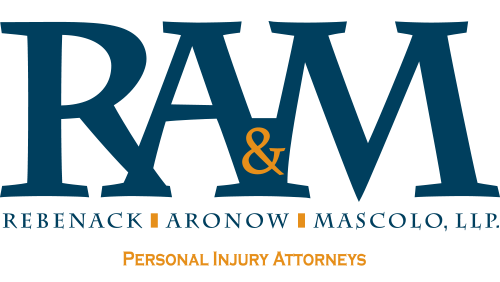How No-Fault Insurance Applies to New Jersey Trucking Accidents
In 2017, deaths from truck crashes reached their highest level in 29 years. Of the more than 37,000 people who died in motor vehicle crashes in 2017, nearly 5,000 were involved in truck accidents. These accidents left many victims and their families to deal with no-fault insurance laws.
Truck Accident Statistics
Most large truck accidents also involve a smaller passenger vehicle. Of all the truck accidents in 2017, 72% of the injured or killed victims were people other than the truck drivers. That included drivers of other vehicles, pedestrians, and bicyclists. Many of these crashes were because of driver error or mechanical failure. A significant number were also related to distracted driving. Also, nearly half of all accident victims were not wearing seat belts when the crashes occurred.
How No-Fault Insurance Works in New Jersey
New Jersey is a no-fault insurance state for most crashes, including those applicable to trucking law. That means that your insurance company handles your claim. In some cases, it is not possible to file suit against negligent drivers because of this law. The policies covering these accidents are called PIP, which stands for personal injury protection. PIP policies are also called “basic coverage.” These policies usually pay out lost wages, medical bills, and other expenses. They do not, however, provide for punitive damages or damages for pain and suffering. Their advantage is that they pay out the money they do provide fairly quickly.
Basic coverage includes $5,000 for property damage. This is for any damage you cause to someone else’s property. The PIP of the policy is up to $15,000 worth of lost wages and expenses, including medical expenses for most injuries. For serious injuries that result in a significant loss of quality of life, PIP provides up to $250,000 of coverage.
You should keep in mind, however, that basic coverage does not cover any liability coverage. That means that if you cause an accident, you will be financially responsible for any damages over and above what is covered by the other driver’s PIP. In a basic policy, you are allowed to add $10,000 worth of liability coverage for such instances. That means that if you have many financial assets, basic coverage may not be a wise choice.
Aside from basic coverage, you can pick a “standard policy,” which includes liability coverage of between $15,000 and $250,000 per person or between $30,000 and $500,000 per incident. With a standard policy, you get to choose between two versions regarding your right to file suit—limited and unlimited. Basic coverage and standard policies come with a limited right to sue, which means there are specific instances when you can sue another driver for injuries you, your family member, or your friend sustains. The exceptions allowed under a limited right to sue include:
- Loss of a limb
- Severe disfigurement
- Serious scarring
- Displaced fractures, which is where the bone protrudes through the skin
- Loss of a fetus
- Injuries where the affected body part, even if still attached, will never again function as it should
- Death

In any of these cases, you or your advocate can file a lawsuit against an at-fault driver. If the accident was caused because of a company’s negligence, such as in the famous Grimshaw v. Ford Motor Company case that resulted in a $125 million judgment against Ford because of the Pinto’s faulty gas tank construction, then the suit may be filed on your behalf alone or as part of a class-action.
In these cases, you may be awarded damages for one or more of the excepted situations. In Grimshaw v. Ford, Richard Grimshaw was severely disfigured and burned over 95% of his body, losing several fingers and his left ear in the process. He suffered 52 operations in the five years between the accident and his 18th birthday. That was the reason the punitive and compensatory damages were both as high as they were.
Percentage of Fault
In certain cases, if you’re driving and you happen to be partially at-fault, then any damages you receive will be reduced correspondingly. For example, if a judge deems you 20% at-fault for an accident in which you are injured, you would receive only 80% of the awarded damages.
If you are found to be more than 50% at-fault for an accident in New Jersey, then you have no recourse and are not entitled to any damages other than those covered under PIP. When an accident involves multiple parties, the shared fault can get quite complex. This is one of the primary places where a personal injury lawyer can help and advise a victim.
An unlimited right to sue means you can do whatever you want after an accident. Both versions of the standard policy are more expensive than basic coverage.
Vehicle Damage
It is important to note that the no-fault law only applies to injuries and not to vehicle damage for which you are free to file suit against the other driver.
In New Jersey, these provisions cover both car accidents and those involving light trucks not involved in commerce. If you have an accident involving a commercial truck, however, you can file suit both against the driver and the company for which the driver works. This also counts if a truck driver’s negligence causes you to have an accident with another vehicle not involving the truck. For cases like that, comparative fault may apply. In these situations, it may be wise to speak with an attorney whose focus is trucking law. Such a professional could help sort out any complications in the case.
The Statute of Limitations with No-fault Insurance
Generally, you have two years from the date of the accident to file your lawsuit in a situation where you meet all of the guidelines for filing such a suit. If the other party is the government or a person who was representing the government in some way when the accident occurred, then the filing time frame and rules are different.
In some cases, you must file a “Notice of Claim” with the applicable entity before filing suit. Assuming you have to do that, you must get underway with the process quickly because the time frame to file suit against a government entity, which varies by jurisdiction, can be as little as 30 days. Most times, however, you have up to 180 days to file the notice and the lawsuit. Still, speed is of the essence in these cases.
Legal Assistance for Truck Accident Victims
At RAM Law, we focus on personal injury cases, including those that involve commercial truck accidents. Our goal is to protect your rights. To help clients feel comfortable, we maintain a low-pressure, homey atmosphere in our office. We know how stressful it can be to deal with being injured and not knowing where to go or what to do. Contact us today to set up an appointment and protect your rights. You can reach our New Brunswick office at (732) 247-3600 and our Somerville office at (908) 448-2560.


